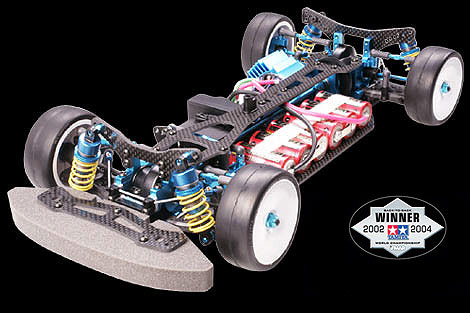The GT-R of the 1990s included a 2.6 L straight six-cylinder twin-turbo engine producing 206 kW (276 hp). The turbo-chargers were of a hybrid steel/ceramic design allowing them to spool up faster due to the light nature of the ceramic exhaust wheel.
Power was delivered to all four wheels using an electronically-controlled all wheel drive system referred to by Nissan as the ATTESA-ETS system. The ATTESA-ETS system uses two G-Sensors mounted underneath the centre console, which feed lateral and longitudinal inputs to the ECU. The ECU would then control the feed of power by allowing a limited amount to be delivered to the front wheels via an electronic torque split converter. In 1995, the ATTESA-ETS Pro was introduced as an option for R33 GT-R customers, and came as standard equipment in GT-R V-spec models. It was later standard equipment in all GT-R models for the R34 Skyline GT-R. The ATTESA-ETS Pro added an Active Limited Slip Differential, which was controlled by the onboard ATTESA computer. This was only for the rear differential, as the front differential remained as a normal Limited Slip Differential. The ATTESA-ETS Pro was also advertised in brochures as adding an electroniclly controlled 4-channel ABS brake system. Although it is not related to the all wheel drive system, it uses much of the same sensors, and the same computer. It is said the R32 could be switched from AWD to RWD by removing a fuse (unknown), but R33 and R34 models had to have the front driveshaft removed.
The car also had computer-controlled all wheel steering system referred to as HICAS. The HICAS system activated when the vehicle exceeded 80 km/h and controlled the steering of the rear wheels in the same direction as the front to improve turn in on entry to corners. It should be noted however that this feature is often seen as more of a hindrance than help in race applications. The system tends to favour less advanced drivers, and can make the rear suspension unstable during high speed cornering. For this reason many kits are available to override this system usually by looping it's hydraulic lines back on themselves. This is seen to make the car much more predictable when driving at the limit of grip.
While the published figures from Nissan were as quoted above, practical tests showed the car had a factory power output of closer to 330 ps (325 hp) at the flywheel. The lower published figure was Nissan's response to the need to abide by a gentleman's agreement between the Japanese auto manufacturers not to release a car to the public exceeding 280 ps (276 hp) of power output.
RB26DETT V6 TWIN TURBO
Wednesday, 7 November 2007
Power-train
Subscribe to:
Post Comments (Atom)








1 comment:
The RB26dett is a inline 6 not a V6!
Post a Comment